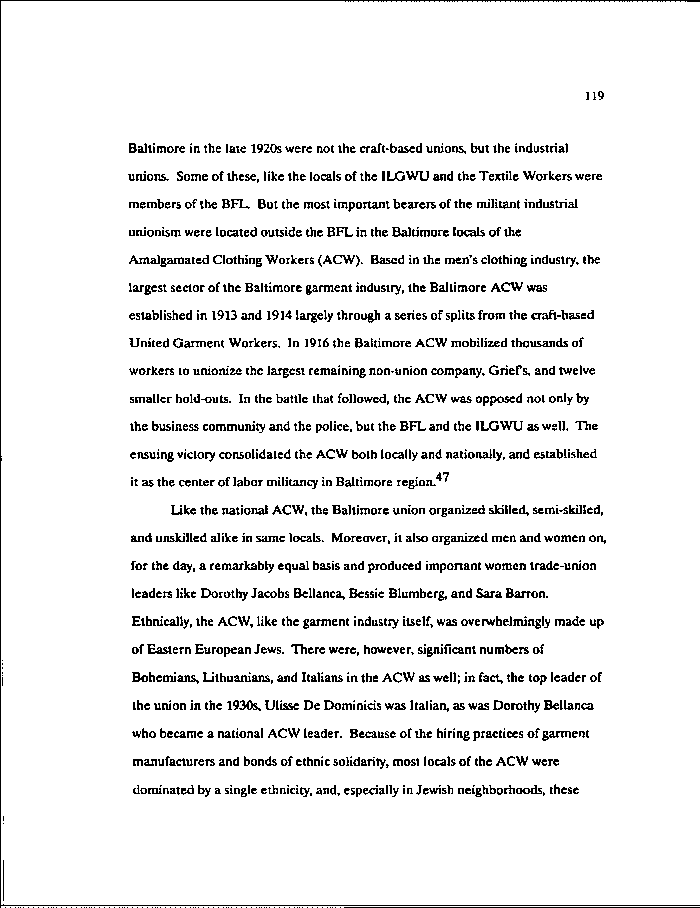|
119
Baltimore in the late 1920s were not the craft-based unions, but the industrial
unions. Some of these, like the locals of the ILGWU and the Textile Workers were
members of the BFL. But the most important bearers of the militant industrial
unionism were located outside the BFL in the Baltimore locals of the
Amalgamated Clothing Workers (ACW). Based in the men's clothing industry, the
largest sector of the Baltimore garment industry, the Baltimore ACW was
established in 1913 and 1914 largely through a series of splits from the craft-based
United Garment Workers. In 1916 the Baltimore ACW mobilized thousands of
workers to unionize the largest remaining non-union company, Griefs, and twelve
smaller hold-outs. In the battle that followed, the ACW was opposed not only by
the business community and the police, but the BFL and the ILGWU as well. The
ensuing victory consolidated the ACW both locally and nationally, and established
it as the center of labor militancy in Baltimore region.
Like the national ACW, the Baltimore union organized skilled, semi-skilled,
and unskilled alike in same locals. Moreover, it also organized men and women on,
for the day, a remarkably equal basis and produced important women trade-union
leaders like Dorothy Jacobs Bellanca, Bessie Blumberg, and Sara Barron.
Ethnically, the ACW, like the garment industry itself, was overwhelmingly made up
of Eastern European Jews. There were, however, significant numbers of
Bohemians, Lithuanians, and Italians in the ACW as well; in fact, the top leader of
the union in the 1930s, Ulisse De Dominicis was Italian, as was Dorothy Bellanca
who became a national ACW leader. Because of the hiring practices of garment
manufacturers and bonds of ethnic solidarity, most locals of the ACW were
dominated by a single ethnicity, and, especially in Jewish neighborhoods, these
|

